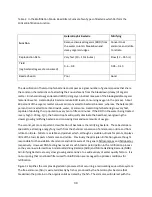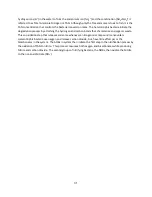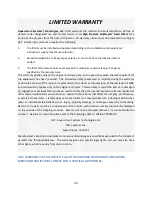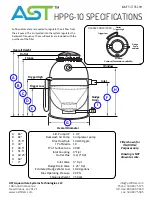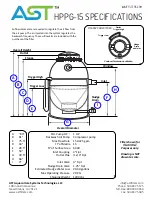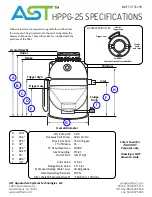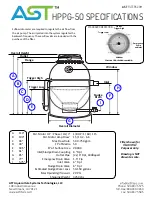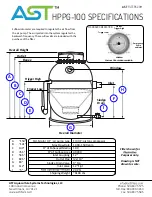
22
converted to sulfites (SO
2
=
) or sulfides (S
=
) which are toxic to many aquatic species. The smell of sulfides
is likened with the smell of rotten eggs.
After a backwash, the particles released from the bead bed are settled into the sludge compartment
where they immediately begin to decay. The decay process deletes the oxygen and the sulfates found
in the sludge are converted to sulfides. If the sludge accumulates for several days, you can smell the
sulfides as the sludge comes out of the sludge discharge pipe. This smell disappears as soon as the
oxygen re-enters the sludge. If the sludge is applied to land, the smell will almost immediately
disappear. If the sludge is placed in a tank, it will continue to smell until the tank is aerated.
Your
PolyGeyser®
is designed to mitigate any sulfites or sulfides that are produced under normal
operations. The unit is designed to re-suspend the sludge each backwash cycle which introduces oxygen
back into the sludge. The rate of sulfide release from compacted sludge is very slow. The amount of
sludge in the internal sludge storage has minimal impact on sulfide release. Any released sulfide is
diluted and aerated as it moves upwards from the sludge basin through the filter. By the time sulfides
reach the bead bed they have reacted with oxygen and converted back to sulfate (safe).
There are no documented cases of sulfides from a
PolyGeyser®
causing a fish kill. However, when an
operational
PolyGeyser®
loses power so both the water circulation and the backwashing is disrupted,
then the bacteria in the sludge and the biofilm in the bed will rapidly deplete all the oxygen in the filter.
Sulfides will be produced and begin to accumulate. When the power restores circulation, sulfide can be
smelled for the first minute. The sulfides could potentially cause damages to aquatic species in the
receiving tank or pond. So as a precaution:
In cases of prolonged power interruption, divert the initial
flush of water away from ponds or tanks containing sensitive aquatic species.
In summary, sludge digestion does occur in any
PolyGeyser®
under organic loading. Under many
circumstances sulfides are produced but largely remain in the sludge. It is normal to smell “rotten egg”
smell as the sludge is removed from the unit. The smell will dissipate rapidly once the sludge is exposed
to oxygen. Sulfides produced in the sludge basin have not been observed to have any impact on waters
treated by the units. If an active filter is turned off for more than a couple of hours, the first flush of
water should be diverted to avoid the sulfides produced while the unit is incapacitated
Filter Acclimation
The bacterial culture, which grows attached to the beads, performs the biochemical transformations
that are so critical in the purification of recycled waters. Initially, the biofilter has no bacteria and the
culture must be started. Development of a biofilm layer on the media is required for biofiltration. The
process of growing the initial bacterial culture in the biofilter or adjusting an established culture to a
change in loading is called “acclimation”. Fortunately, the process of biofilter acclimation is easy. It just
takes a little time and food for the bacteria.
The acclimation process is very simple if you have an acclimated bead filter, or other cycled aquaculture
system on your premises. Just exchange a few cubic feet of acclimated beads from the old filter with
new beads and both filters will adjust rapidly. Lacking the beads, have a friend provide you with media























